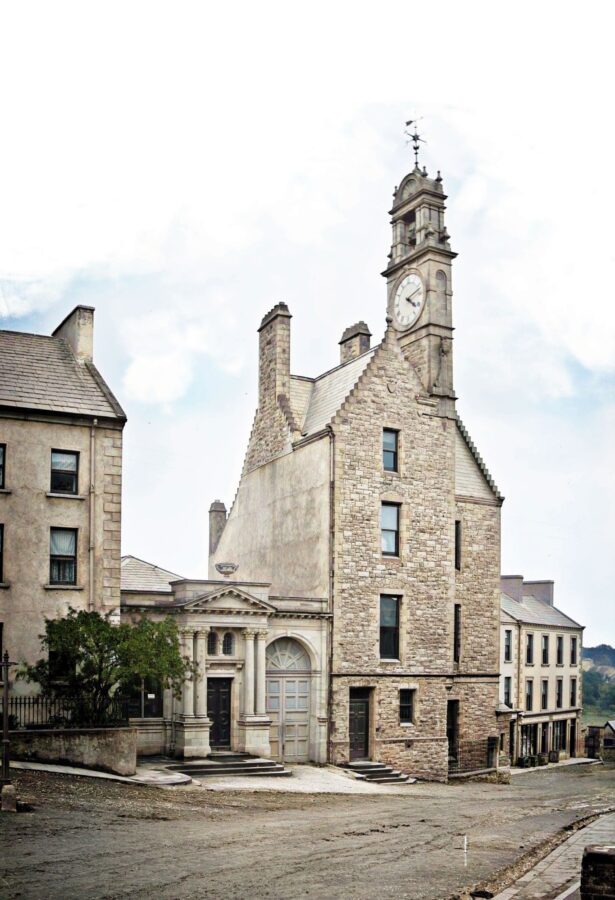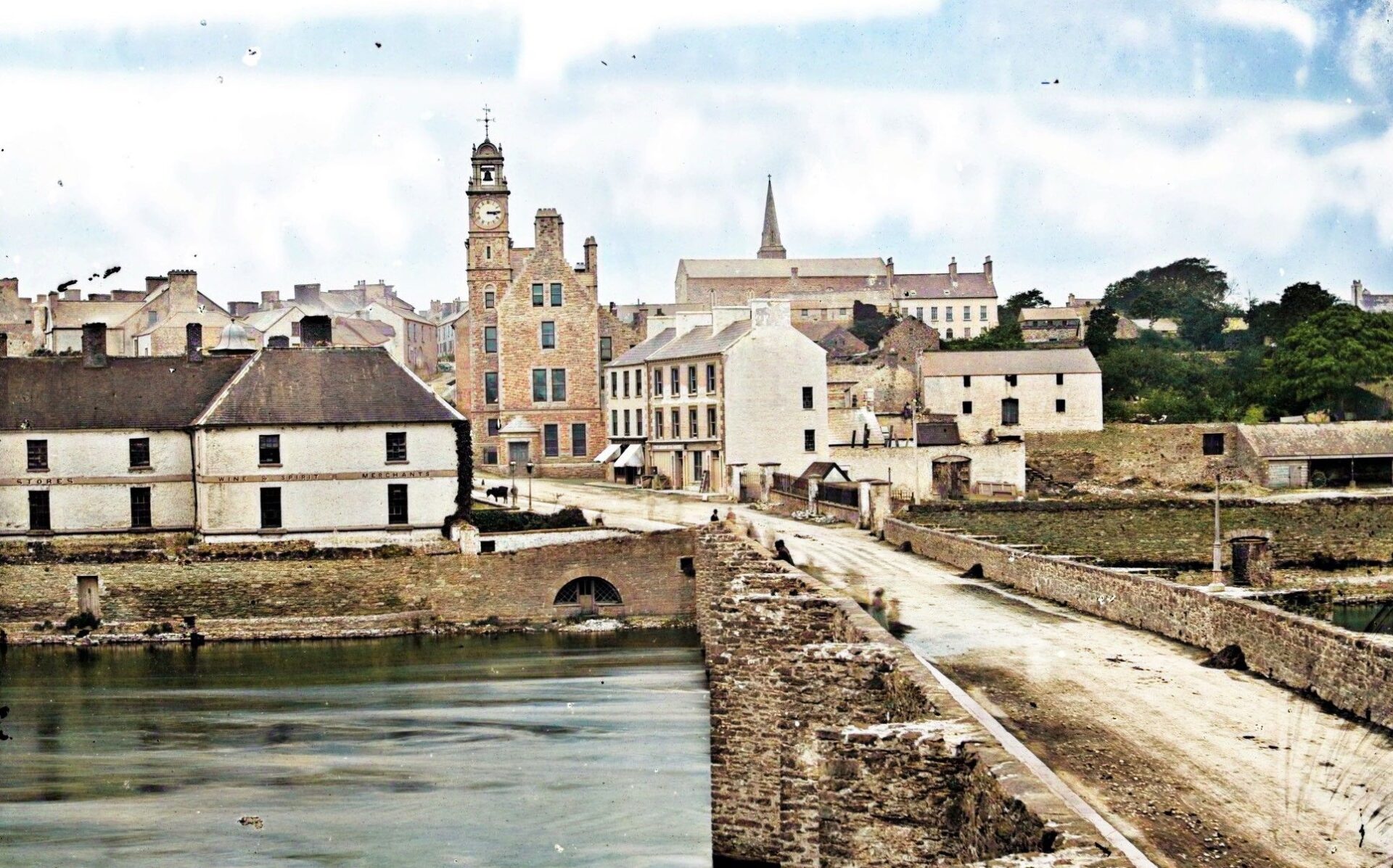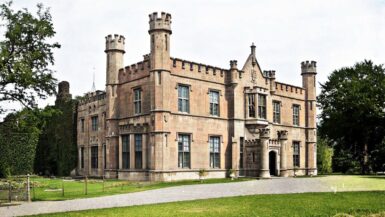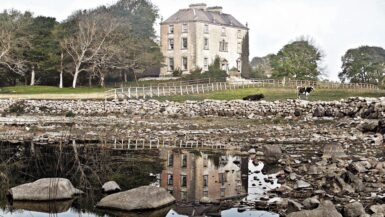The building that once housed the Royal Bank of Ireland, originally established as the Belfast Bank, stands as a significant architectural and historical landmark in Ballyshannon, Co. Donegal. Constructed in 1878, this building not only served the financial needs of the community but also became an integral part of the town’s streetscape and history.
Architectural Significance
Designed with a distinctive Scottish Baronial architectural style, the building features crow-stepped gables and a robust construction of snecked squared rubble stone walls. Its most striking feature, a tall two-storey clock and bell tower, was added to address concerns about the building’s extension onto the street. The clock tower, adorned with ashlar stone and a bell metal bell, became a defining element of the building, contributing to its castle-like appearance and making it a landmark in Ballyshannon.
The building’s layout includes a four-storey structure over a basement level, with accommodations for the bank manager above the banking hall. It showcases quality craftsmanship in its rock-faced masonry, complemented by ashlar detailing, particularly in the bell tower. This mix of materials and design elements lends the building an imposing yet refined presence on Main Street.
Historical Context
The Belfast Bank initiated its operations in Ballyshannon in 1869, signaling the town’s growing commercial prosperity. The construction of the bank building in 1878 was a result of an agreement with local planning authorities, which allowed the bank to extend towards the road in exchange for providing the town with its iconic clock.
Over the years, the building witnessed several changes in ownership and purpose. After serving as the Belfast Bank, it became the Royal Bank of Ireland and later underwent a significant transition in 1966 when the Royal Bank amalgamated with the Provincial Bank, leading to the formation of the Allied Irish Bank. The Gallogley family, known for their clock and jewellery business, occupied the building until it was sold to local businessman Eamonn McNulty in the early 21st century.
Community and Restoration
The clock face suffered extensive damage during a storm in 2014, leading to a community-driven restoration effort. Spearheaded by the Ballyshannon Regeneration Group and supported by Cllr Barry Sweeny, the project saw the installation of a new stainless steel clock face, powered by an electrical unit while preserving some of the original mechanical cogs. Local craftspeople played a pivotal role in this restoration, reflecting the community’s commitment to preserving its heritage.
Today, the former bank building serves as a retail outlet, with its historical and architectural significance making it a focal point in Ballyshannon’s streetscape. The restoration of the clock and the building’s continued use highlight the community’s dedication to maintaining its historical landmarks for future generations.
Conclusion
The building originally established by the Belfast Bank and later known as the Royal Bank of Ireland in Ballyshannon is more than a former bank building; it is a testament to the town’s rich historical and architectural heritage. Its transformation over the years reflects changes in banking, commerce, and community priorities, standing as a reminder of Ballyshannon’s past and its ongoing preservation efforts.







Leave a reply